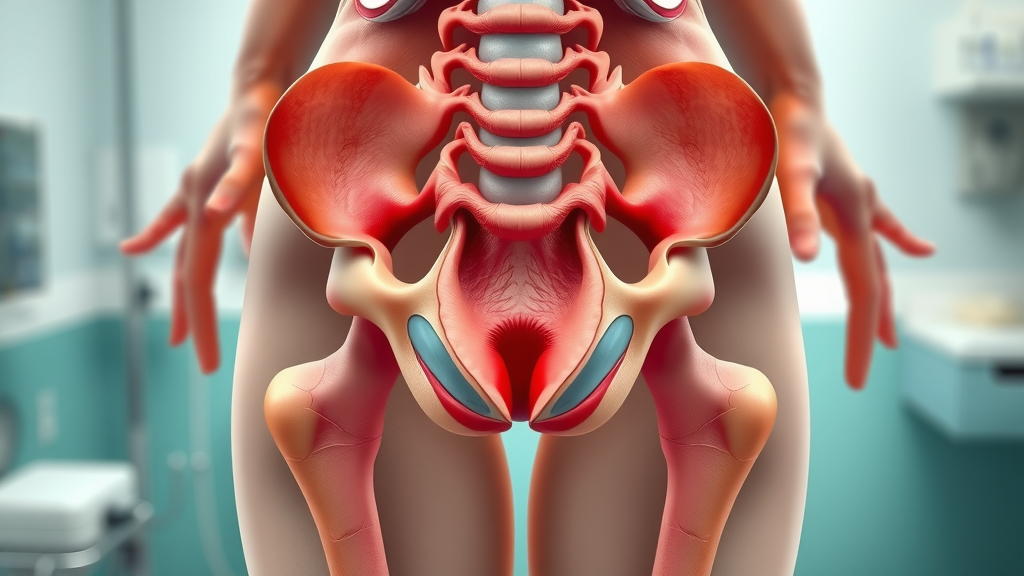Did you know that pelvic floor dysfunction affects millions of women worldwide, yet remains widely misunderstood and undertreated? Diving deep into pelvic floor therapy expert insights, this comprehensive article demystifies the critical role of pelvic floor therapy in enhancing women's health. Whether dealing with postpartum challenges, pelvic pain, or urinary incontinence, understanding this specialized therapy can transform lives. Join us as we explore definitions, treatment methods, expert advice from Dr. Luba Khakham, PT, DPT of Sage Physical Therapy and Wellness, and practical tips for maintaining pelvic health.
Startling Facts About Pelvic Floor Therapy Expert Insights and Women's Health

Pelvic floor disorders are more common than many realize — affecting roughly 1 in 3 women at some point in their lives, yet only a fraction seek therapy. Pelvic floor therapy expert insights reveal that symptoms like urinary leakage, pelvic pain, or discomfort during intimacy are not just 'normal aging' signs but treatable conditions. Despite this, societal taboos and misinformation often prevent timely intervention. As Dr. Luba Khakham, PT, DPT explains, pelvic floor care requires compassionate attention and personalized treatment strategies that go beyond exercise, embracing the mind–body connection.
Understanding Pelvic Floor Therapy Expert Insights: Definition and Scope
What Is Pelvic Floor Therapy and How Does It Differ from General Physical Therapy?

Pelvic floor therapy is a specialized branch of physical therapy focusing on the internal muscles, ligaments, and fascia that support vital pelvic organs. Dr. Luba is trained in general outpatient orthopedic physical therapy, which often targets musculoskeletal issues such as joint pain or muscle strains, and specializes in pelvic floor therapy where she works on this intricate group of muscles located inside the pelvis.
These muscles control essential functions like bladder and bowel continence, sexual health, and pelvic stability. Dr. Luba Khakham, PT, DPT of Sage Physical Therapy and Wellness highlights, "The pelvic floor is responsible for not only continence but also sexual function and posture. It requires unique examination and treatment approaches, including internal assessment that typical PT does not cover."
Pelvic Floor Therapy Expert Insights: Common Conditions Treated
Pelvic Pain and Incontinence: Symptoms and Causes

Many women suffer from symptoms such as pelvic pain, urinary or fecal incontinence, pressure sensations, or painful intercourse. These conditions often stem from pelvic floor muscle dysfunction, hormonal changes, childbirth trauma, or chronic stress. According to Dr. Khakham, PT, DPT "Pelvic pain and incontinence are common but not normal. They are highly treatable once properly assessed. Too often, women endure symptoms assuming they are lifelong or unfixable."
Postpartum Pelvic Floor Therapy Expert Insights
Childbirth radically alters pelvic floor function, yet postpartum care often neglects this critical recovery phase. Dr. Khakham, PT, DPT advocates for standard postpartum pelvic floor assessments around six weeks after delivery. Whether the birth was vaginal or cesarean, scar tissue mobilization, muscle coordination training, and individualized rehabilitation can restore function and reduce complications. "I had a patient who delivered recently; because we practiced pushing techniques and coordinated therapy beforehand, her delivery was efficient—only three pushes," she shares. This illustrates the empowering potential of proactive pelvic floor therapy expert insights in maternal health.
Kegel Exercises and Beyond: Advanced Pelvic Floor Therapy Expert Insights
Why Pelvic Floor Relaxation Is as Important as Strengthening

While Kegel exercises are widely known for pelvic floor strengthening, Dr. Khakham, PT, DPT emphasizes a balanced approach that includes relaxation and full range of motion. Overactive pelvic floors — muscles that are chronically tight — can cause fatigue and dysfunction, leading to symptoms similar to those caused by weakness. She explains, "Many patients believe they need to strengthen their pelvic floor, but often their muscles are already overactive and cannot relax properly. We focus on 'down training' and allowing full muscle range of motion to restore function."
What to Expect During a Pelvic Floor Physical Therapy Session

The initial session typically involves a comprehensive 90-minute evaluation, including medical history, external observation, and possibly, an internal pelvic floor exam. This internal exam, though understandably intimidating for some, is essential to assess muscle tone, strength, and coordination accurately. Dr. Khakham, PT, DPT points out, "If a therapist is not doing an internal exam, they aren’t truly performing pelvic floor therapy. It is the only effective way to understand the underlying issues."
The Importance of Internal Examination in Pelvic Floor Therapy
An internal exam allows the therapist to palpate muscles directly, detect trigger points, scar tissue, or overactive muscles that cannot be assessed externally. This hands-on approach enables tailored treatment plans and more successful outcomes. Patient trust and comfort are paramount during this process, necessitating sensitivity and clear communication from the therapist.
Everyday Habits to Support Pelvic Floor Health

Maintaining pelvic floor health extends beyond therapy sessions. Simple daily habits like diaphragmatic breathing, walking, adequate hydration, and sleep profoundly impact overall health and pelvic muscle function. Dr. Khakham, PT, DPT explains, "Proper breathing habits synchronize with pelvic floor relaxation and contraction. Since stress alters breathing patterns and tightens muscles, learning to breathe diaphramatically can prevent dysfunction."
The Connection Between Breathing and Pelvic Floor Function
The pelvic floor and diaphragm work in tandem; when breathing is shallow due to stress or poor posture, pelvic floor muscles can become overactive and tight. Restoration of natural, deep breathing patterns helps relax these muscles and improves overall pelvic health.
Integrating Dry Needling to Release Trigger Points and Tight Muscles
Post-Dry Needling Care for Optimal Results
Dry needling is an innovative treatment modality for releasing muscular trigger points and improving circulation within soft tissue. Dr. Khakham, PT, DPT an expert in the practice, notes, "Dry needling is one of the best tools in my toolbox for releasing soft tissue knots that cause pain and tension. After treatment, applying heat and gentle stretching maximizes benefits and aids muscle relaxation."
FAQs: Common Questions About Pelvic Floor Physical Therapy
Do I have to have an internal exam?
Not necessarily, however it is the best way to get a proper assessment of pelvic floor function.Does pelvic floor physical therapy actually work?
Absolutely. Therapy significantly reduces symptoms of incontinence, pain, and dysfunction in most patients within just a few sessions.What is the success rate of pelvic floor physical therapy?
Most patients experience notable improvement early on; long-term success depends on condition severity and adherence to therapy.What emotions are connected to the pelvic floor?
The pelvic floor holds stress and emotional tension, affecting muscle tightness and coordination; therapy often includes mind-body approaches.
Key Takeaways from Pelvic Floor Therapy Expert Insights
Topic |
Insight |
|---|---|
Pelvic Floor Therapy |
A specialized physical therapy focusing on internal pelvic muscles to treat incontinence, pain, and postpartum recovery. |
Kegel Exercises |
Important but insufficient alone for some; relaxation and full range of motion are critical. |
Dry Needling |
Effective tool for releasing muscle trigger points and improving blood flow. |
Breathing |
Proper diaphragmatic breathing supports pelvic floor relaxation and function. |
Postpartum Care |
Essential for recovery; includes scar tissue mobilization and functional assessments. |
Conclusion: Embracing Pelvic Floor Therapy for Enhanced Quality of Life
“Make the investment in yourself. Prevention and maintenance through pelvic floor therapy can significantly improve your quality of life.” – Dr. Luba Khakham, PT, DPT of Sage Physical Therapy and Wellness
Pelvic floor therapy is more than a treatment—it's a pathway to reclaiming vitality, function, and confidence in women's health. As expert insights from Dr. Luba Khakham, PT, DPT clearly illuminate, addressing pelvic floor dysfunction early and comprehensively leads to profound physical and emotional benefits. Whether you're pregnant, postpartum, experiencing pain, or simply seeking to maintain wellness, pelvic floor therapy offers evidence-based solutions tailored to your needs. Embrace this specialized care for a healthier, more empowered life.
Contact and Further Resources
Interested in pelvic floor therapy expert insights from Dr. Luba Khakham? Visit Sage Physical Therapy and Wellness website or connect via Instagram and Facebook @ SagePTWellness. Dr. Khakham, PT, DPT also hosts the podcast "Sage Connections with Luba" sharing valuable women's health discussions.
 Add Row
Add Row  Add
Add 




Write A Comment